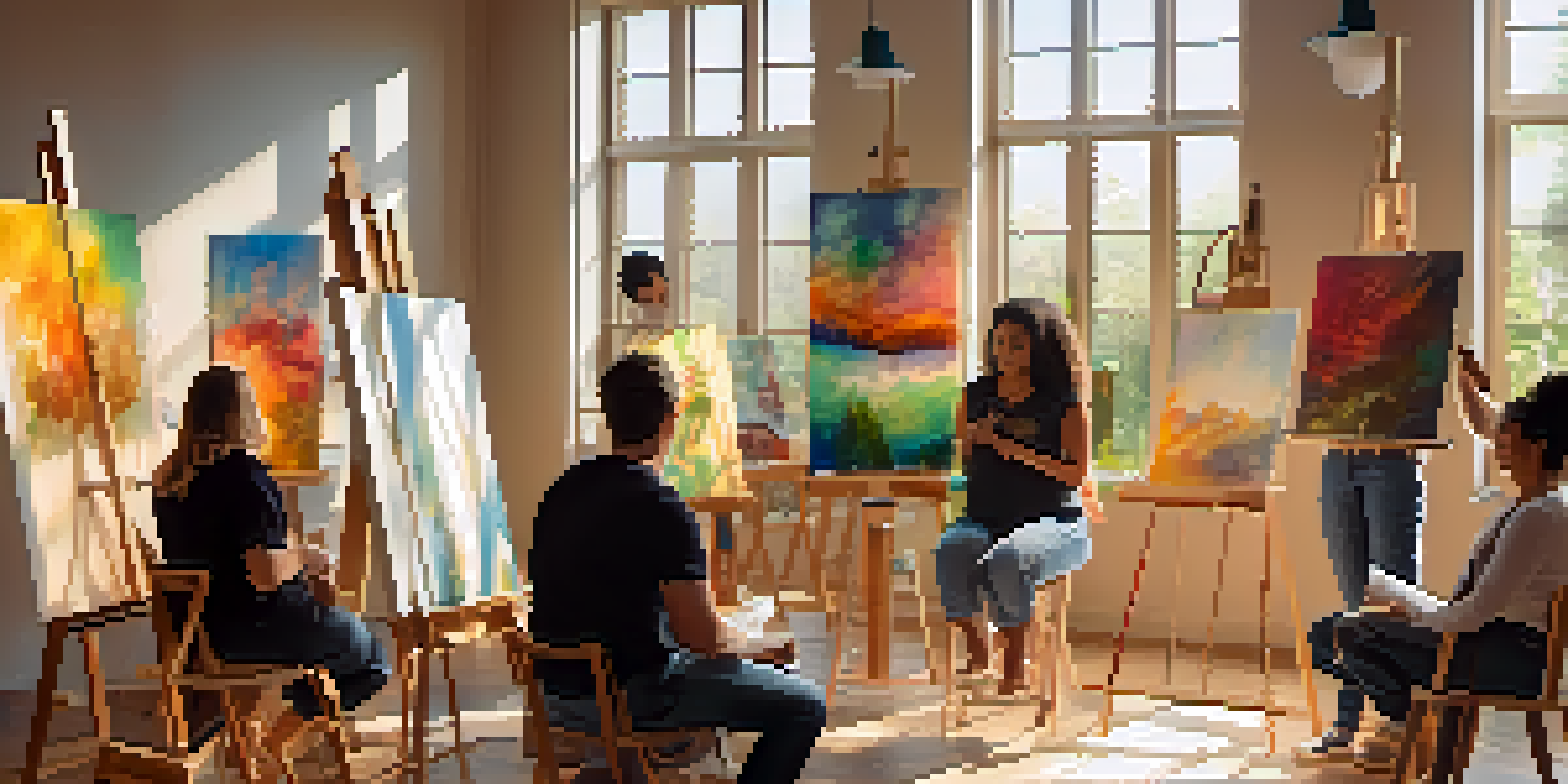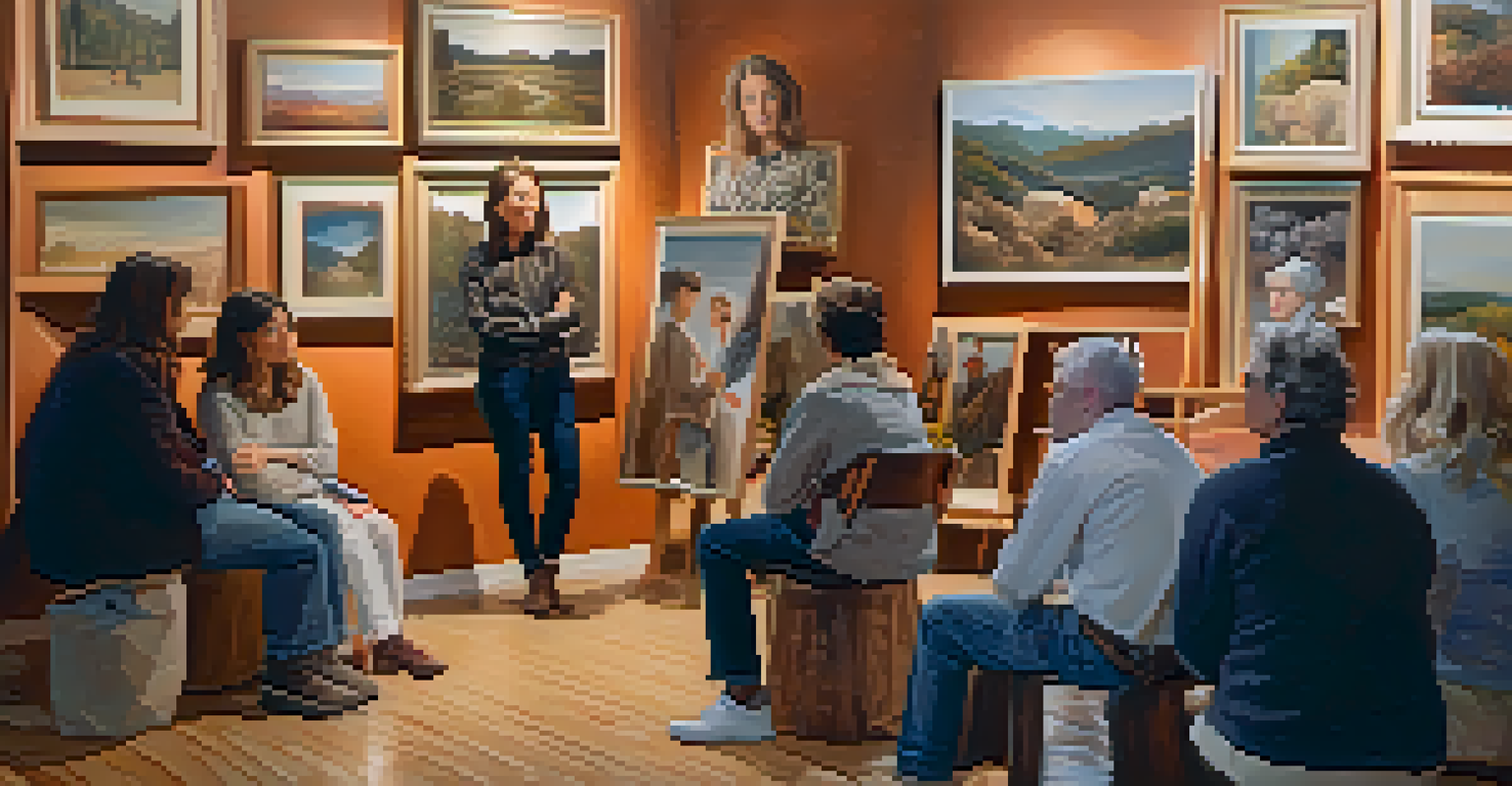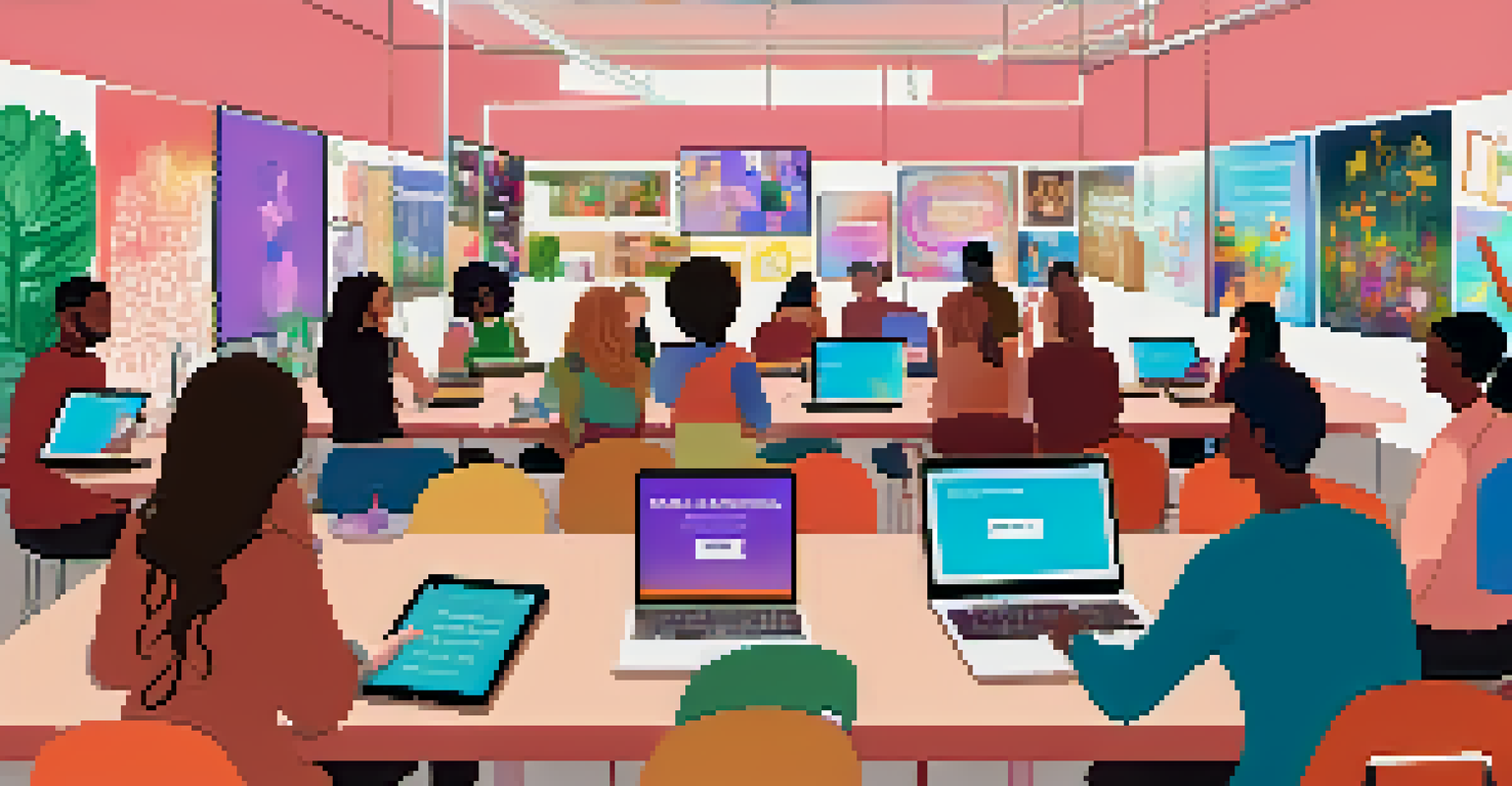Art and Mental Health: Sharing Vulnerability Online

The Healing Power of Art in Mental Health
Art has long been recognized as a powerful tool for healing. It allows individuals to express emotions that might be difficult to verbalize, from joy to profound sadness. This form of expression can be incredibly therapeutic, providing a safe outlet for feelings and thoughts that often remain hidden.
Art enables us to find ourselves and lose ourselves at the same time.
Engaging in creative activities can reduce anxiety and depression, offering a form of escapism. For many, creating art is not just a hobby; it's a lifeline that promotes mental well-being. Whether it's painting, drawing, or crafting, the act of creating can foster a sense of accomplishment and purpose.
Additionally, art can serve as a bridge to connect with others. When individuals share their creations, they often find community support, which is vital for mental health. This shared experience can help reduce feelings of isolation and encourage empathy and understanding.
Vulnerability: A Key Component of Artistic Expression
Vulnerability is an essential part of creating art, as it often involves exposing personal feelings and experiences. This openness can be daunting, but it also makes art more relatable and impactful. Artists who share their struggles invite others to do the same, breaking down barriers around mental health discussions.

By showcasing their vulnerabilities, artists not only validate their own experiences but also resonate with those who may feel alone in their emotions. This authenticity can spark conversations about mental health, encouraging others to share their stories and seek help when needed.
Art as a Healing Tool
Art provides a therapeutic outlet for expressing complex emotions, promoting mental well-being.
Ultimately, vulnerability in art fosters a culture of acceptance and understanding. It challenges societal norms that often stigmatize mental health issues, paving the way for more open discussions and support systems.
The Role of Social Media in Sharing Artistic Vulnerability
Social media has transformed the way artists share their work and experiences. Platforms like Instagram and TikTok provide a space for individuals to showcase their art while also sharing personal stories behind their creations. This combination of visual and narrative elements can create a profound impact on viewers.
The greatest respect an artist can pay to his fellow artist is to be a little more intelligent than he is.
Through social media, artists can reach a global audience, connecting with others who may be experiencing similar feelings. This accessibility helps to demystify mental health issues, making them more relatable and less daunting for those who struggle in silence.
Furthermore, social media enables artists to build communities around their work, fostering a sense of belonging. These online spaces can provide essential support, encouraging individuals to embrace their vulnerabilities and seek help if needed.
Art Therapy: A Professional Approach to Healing
Art therapy combines the creative process of making art with psychological theory to help individuals address emotional challenges. Licensed therapists guide clients in using artistic expression to explore their feelings and experiences in a structured environment. This professional approach can be particularly beneficial for those who find it hard to articulate their emotions.
The therapeutic setting allows for deeper exploration of issues, helping individuals gain insights into their mental health. By creating art under the guidance of a trained professional, clients can discover new coping strategies and ways to manage their emotions effectively.
Vulnerability Fosters Connection
Sharing personal struggles through art helps break down barriers around mental health discussions.
Ultimately, art therapy serves as a powerful reminder that creativity can be a path to healing. It offers a safe space for individuals to explore their vulnerabilities while receiving support from a trained therapist.
The Intersection of Art and Mental Health Awareness
Art has the unique ability to raise awareness about mental health issues. Through various forms of artistic expression, creators can shed light on the challenges they face and the importance of mental well-being. This visibility can help destigmatize mental health discussions, encouraging others to share their experiences.
Exhibitions, performances, and online campaigns centered around mental health can spark important conversations. They invite audiences to engage with the topic in a meaningful way, fostering empathy and understanding for those who struggle with mental health issues.
As artists share their journeys through their work, they contribute to a growing narrative that values mental health awareness. This collective effort can inspire positive change, encouraging society to prioritize mental well-being and support those in need.
Creating Safe Spaces for Artistic Vulnerability
Creating safe spaces for artists to share their vulnerabilities is essential in fostering a supportive community. These spaces can be physical, like art studios, or digital, such as online forums and social media groups. Regardless of the medium, a supportive environment encourages individuals to express themselves freely without fear of judgment.
In these safe spaces, artists can connect with peers who understand their struggles, creating a sense of belonging. Sharing experiences in a non-judgmental setting can be incredibly liberating, providing a platform for healing and growth.
Community Support through Art
Creating safe spaces for artistic expression encourages individuals to connect and seek help together.
Moreover, these environments can inspire collaboration among artists, leading to projects that highlight mental health. By working together, creators can amplify their voices, creating a larger impact on the conversation surrounding mental health awareness.
The Future of Art and Mental Health Advocacy
As society continues to evolve, so does the relationship between art and mental health advocacy. Artists are increasingly using their platforms to advocate for mental well-being, creating works that challenge stigma and promote open discussions. This evolution signifies a shift towards a more compassionate and understanding society.
In the future, we can expect to see even more initiatives that combine art with mental health awareness. From community workshops to large-scale art installations, these efforts will encourage individuals to share their stories and connect with others who have similar experiences.

Ultimately, the intersection of art and mental health advocacy holds great promise. By continuing to foster vulnerability and open dialogue, we can create a world where mental health is prioritized and understood, making it easier for individuals to seek help and find healing.